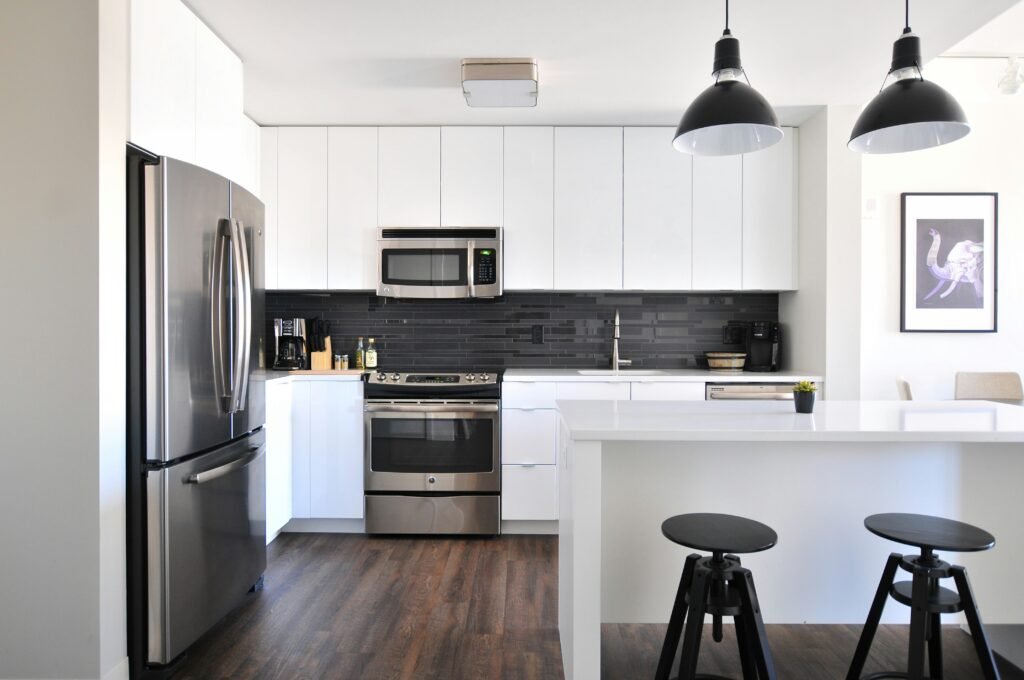Are you struggling to find a sense of structure and organization in your workday at home? If so, you’re not alone. With the rise of remote work, many individuals are facing the challenge of creating a productive and streamlined routine within the confines of their own homes. In this article, we will explore some of the best strategies to help you effectively organize and manage your workday from the comfort of your own space. From setting clear boundaries to creating a dedicated workspace, these tips will surely enhance your productivity and overall work-life balance. So, let’s dive in and discover the key to a successful workday at home!
1. Set a Schedule
Creating a daily routine is essential for organizing your workday at home. Start by determining what time you will start and finish work, just as you would in a traditional office setting. This sets clear boundaries and helps you establish a consistent schedule. Additionally, consider your most productive hours. Some people are morning birds, while others thrive in the afternoon or evening. Identify your peak hours and plan your most challenging tasks during that time.
While it’s important to stay focused, it’s equally important to allocate time for breaks and relaxation. Breaks help you recharge and maintain productivity throughout the day. Schedule short breaks, such as a quick walk or stretching exercises, to give your mind and body a much-needed break. Additionally, set aside time for relaxation, whether it’s reading a book, practicing mindfulness, or spending time with loved ones. By incorporating breaks and relaxation into your schedule, you can maintain a healthy work-life balance.
2. Designate a Workspace
Creating a dedicated work area is crucial for organizing your workday at home. Choose a space that is separate from your personal living areas, such as a spare room or a quiet corner in your home. This helps you mentally transition into work mode and minimizes distractions. When setting up your workspace, make sure to arrange all the necessary equipment and supplies. This includes a comfortable chair, a desk, a computer or laptop, and any other tools specific to your work. Having everything within reach will save you time and ensure you’re ready to tackle your tasks efficiently.
Eliminating distractions in your designated workspace is also essential. Inform your family or housemates about your work schedule and request their cooperation in minimizing interruptions. Turn off the television, silence or turn off notifications on your phone, and prioritize work-related activities. By creating a distraction-free zone, you can enhance your focus and productivity.

3. Prioritize Tasks
Making a to-do list is a powerful tool for organizing your workday at home. Start your day by listing all the tasks you need to accomplish. Prioritize them based on deadlines, importance, and urgency. By breaking down your workload into manageable chunks, you gain clarity on what needs to be done and can tackle each task one at a time. Set realistic goals for yourself, considering the available time and resources. This helps prevent overwhelm and ensures that you complete your tasks effectively.
Task management tools can be incredibly helpful in staying organized. Consider using digital tools or apps that allow you to create task lists, set reminders, and track progress. These tools can help you stay on top of your workload and ensure that nothing important falls through the cracks. Experiment with different options and find a tool that suits your preferences and workflow.
4. Time Block
Divide your workday into blocks to maximize your productivity and efficiency. Assign specific tasks or types of activities to each block of time. For example, you can allocate one block of time for client meetings, another for focused work, and another for administrative tasks. This approach helps you structure your day and ensures that you dedicate sufficient time to different types of work. Make sure to leave buffer time between blocks to account for unexpected activities or delays.
When time blocking, consider your priorities and energy levels. If you have a particularly challenging task, schedule it during your peak energy periods. This way, you can capitalize on your mental clarity and focus. Save easier or more routine tasks for times when your energy dips. By aligning your work with your energy levels, you can optimize your performance and maintain a steady pace throughout the day.

5. Optimize Your Energy Levels
Identifying your peak energy periods is key to organizing your workday effectively. Pay attention to your natural rhythms and determine when you feel the most alert and motivated. This is the time when your brain functions at its best, and you can tackle complex or demanding tasks with ease. Plan your most challenging or important work during these peak energy periods to ensure optimal productivity and focus.
On the other hand, it’s essential to recognize when your energy levels naturally dip. During these periods, it’s best to save tasks that require less mental effort or creativity. This could include responding to emails, organizing files, or conducting research. By leveraging your energy levels, you can work smarter, not harder, and achieve better outcomes throughout the day.
6. Minimize Distractions
minimizing distractions is crucial when organizing your workday at home. One effective strategy is to silence or turn off notifications on your devices. This prevents constant interruptions from emails, social media, or instant messaging apps. Additionally, close non-essential applications or tabs on your computer to avoid the temptation of multitasking. Focusing on one task at a time allows you to complete it more efficiently and with higher quality.
If you find it challenging to concentrate due to external noises, consider using noise-cancelling headphones. These can help block out distractions and create a more conducive work environment. Find a playlist or background noise that helps you stay focused and in the zone. By minimizing distractions, you can maintain your momentum and achieve your goals more effectively.

7. Practice Time Management Techniques
Several time management techniques can greatly benefit your workday organization. One popular approach is the Pomodoro Technique, which involves working in short bursts of intense focus, followed by short breaks. This technique helps improve your focus and prevents burnout. Another effective technique is the Eisenhower Matrix, which involves categorizing tasks based on urgency and importance. This matrix helps you prioritize your workload and ensure you’re spending time on tasks that align with your goals.
Batching similar tasks is another valuable time management technique. Instead of switching between different types of tasks throughout the day, group similar tasks together. For example, dedicate a block of time to responding to emails, another to brainstorming ideas, and another to conducting research. Batching tasks reduces cognitive load and allows you to work more efficiently.
8. Utilize Productivity Tools
In today’s digital age, there are numerous productivity tools available to help you stay organized and on top of your tasks. Digital calendars and reminders are useful for scheduling appointments, deadlines, and important events. You can set up notifications to remind you of upcoming tasks and commitments. Project management software can be beneficial if you’re working on collaborative projects. These tools allow you to assign tasks, track progress, and communicate with team members efficiently.
Consider using note-taking apps or platforms to keep track of ideas, meeting notes, and important information. These tools help you stay organized and ensure that you have all the necessary information at your fingertips. Experiment with different productivity tools and find the ones that fit your work style and preferences. Remember, technology is there to support you and enhance your productivity, so take advantage of the available resources.
9. Take Regular Breaks
Taking regular breaks throughout the day is crucial for maintaining productivity and preventing burnout. Incorporate short breaks into your schedule, ideally every hour or two. Use this time to stretch, do a quick workout, or engage in physical activity. Physical activity boosts blood flow, clears your mind, and improves focus.
In addition to short breaks, allow yourself longer breaks for meals. Step away from your workspace and enjoy a proper lunch break. Use this time to nourish your body and recharge. It’s important to give yourself permission to rest and recharge during the workday. Your productivity and overall well-being will thank you for it.
10. Maintain a Healthy Work-Life Balance
Maintaining a healthy work-life balance is essential when working from home. Establish clear boundaries with your family and friends, communicating your work schedule and expectations. This ensures that your personal life doesn’t encroach on your work hours, and vice versa. Setting these boundaries allows you to be fully present and focused on your work, while also giving you the freedom to enjoy your personal life outside of work hours.
Set aside time for personal hobbies and activities that bring you joy. This could be reading, cooking, playing music, or spending time with loved ones. Taking care of your mental and emotional well-being is just as important as completing your work tasks. Make sure to prioritize self-care and engage in activities that recharge your batteries.
Avoid overworking yourself. It can be enticing to continue working long after your designated work hours, but this can lead to burnout and decreased productivity in the long run. When your workday is over, disconnect from work-related activities and allow yourself time to relax and recharge. By maintaining a healthy work-life balance, you can ensure long-term success and satisfaction in both your professional and personal life.
Conclusion:
Organizing your workday at home requires intention, structure, and self-discipline. By setting a schedule, designating a workspace, prioritizing tasks, time blocking, optimizing your energy levels, minimizing distractions, practicing time management techniques, utilizing productivity tools, taking regular breaks, and maintaining a healthy work-life balance, you can create a productive and fulfilling workday from the comfort of your home. Experiment with different strategies, tailor them to your unique needs, and discover what works best for you. With careful planning and mindful execution, you can thrive in a remote work environment and achieve a sense of balance and accomplishment in your daily routine.

Hello, I’m Kelly Joseph, the author behind Optimum Mindset for an Optimal Lifestyle. Welcome to our website, where we dive deep into the world of mindfulness techniques and productivity hacks. With a mission to help you achieve a more fulfilled life, we offer a comprehensive guide to mastering the art of an optimum mindset. I am passionate about enhancing mental resilience, fostering positivity, and unlocking the potential for goal achievement. This site is a treasure trove of practical tips and strategies that will empower you to live life to the fullest. Join me on this journey of self-discovery and personal growth.

